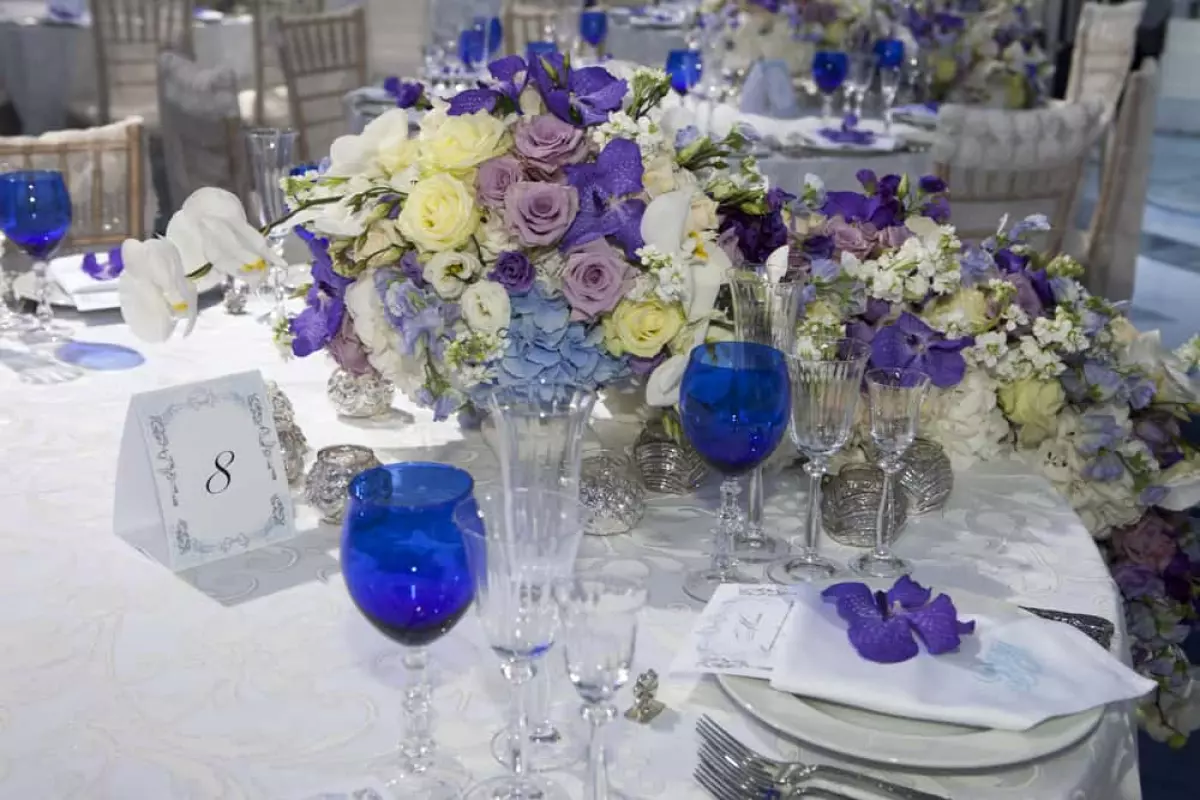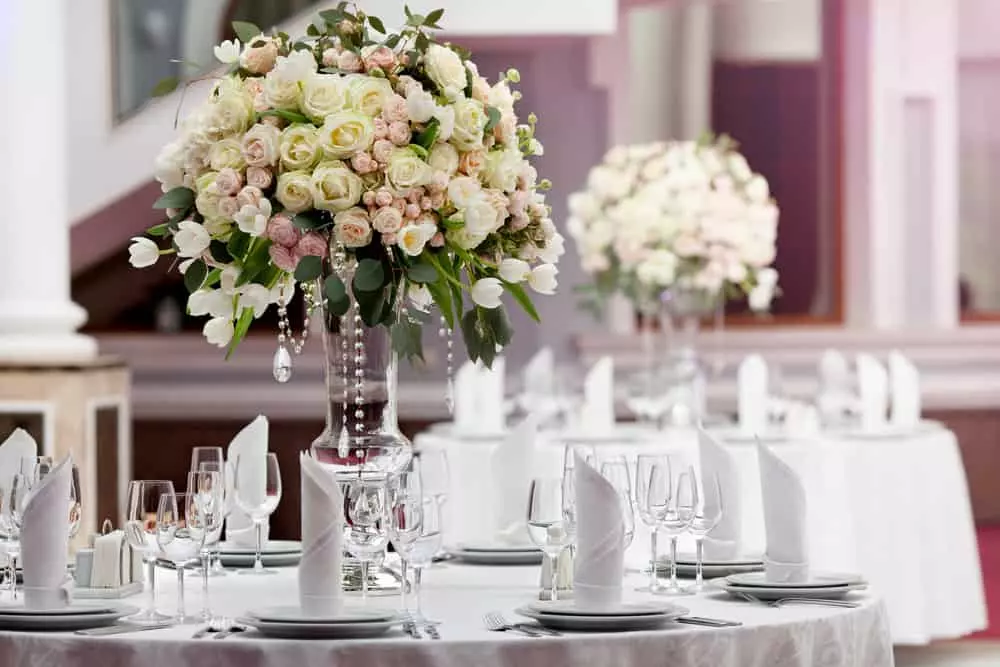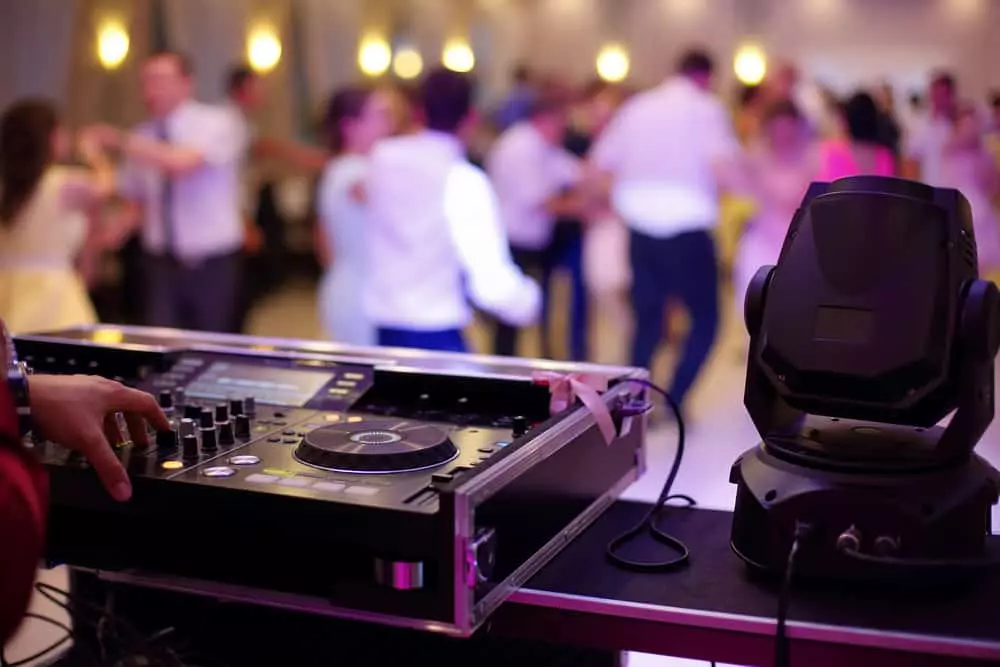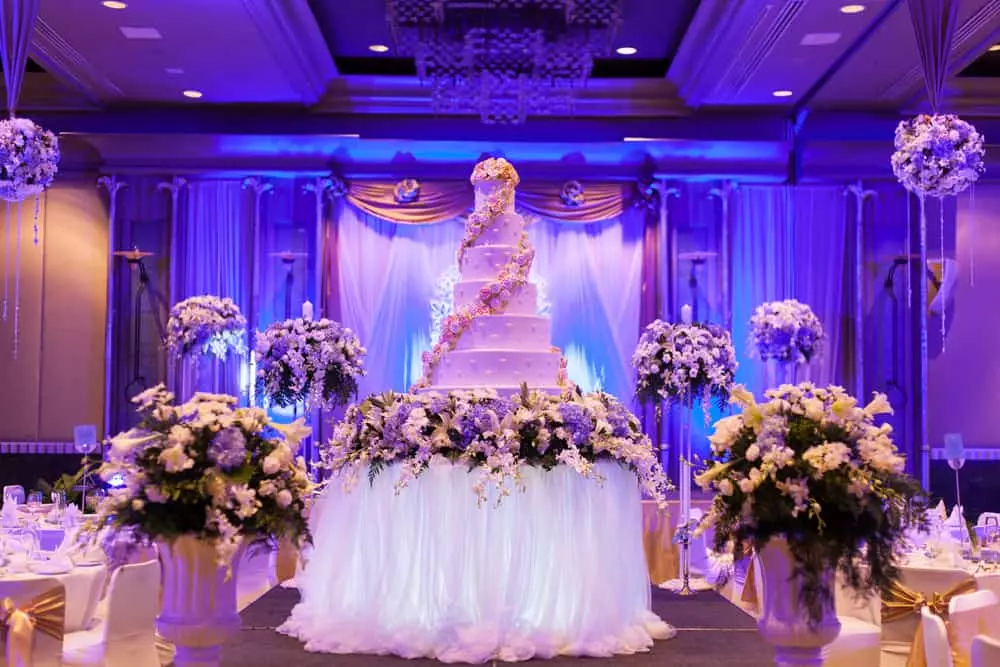Planning a wedding reception can be overwhelming, with many details to consider and decisions to make. To help keep everything organized and on track, many brides and grooms turn to a wedding reception planning checklist. In this article, we will explore the benefits of using a wedding reception planning checklist and provide some tips for creating your own.
Key Takeaways
- Choosing the right venue is crucial to the success of your wedding reception.
- Creating a timeline for your wedding reception will help you stay organized and on track.
- Paying attention to the details, such as guest management, catering, and décor, will help make your wedding reception memorable.
THREE Factors For Choosing the Right Wedding Reception Venue
When planning a wedding reception, choosing the right venue is crucial. It sets the tone for the entire event and can impact the overall experience for you and your guests. Here are some key factors to consider when selecting a reception venue.
1. Considering the Budget
Before you start looking at venues, it’s important to have a clear idea of your budget. Determine how much you can afford to spend on the venue and rentals, such as tables, chairs, and a tent if needed. Keep in mind that some venues may offer all-inclusive packages that include catering, décor, and other amenities. Consider whether this option is more cost-effective for you.
2. Evaluating Reception Venues
When evaluating potential reception venues, there are several factors to consider. First, think about the size of the venue and whether it can accommodate your guest list comfortably. You don’t want the space to feel too cramped or too empty. Next, consider the location and accessibility of the venue. Is it easy for your guests to get to, and is there ample parking?
Another important factor to consider is the ambiance of the venue. Does it fit with the style and theme of your wedding? Is it indoor or outdoor, and does it have the necessary amenities, such as restrooms and a dance floor? Finally, consider the reputation of the venue. Read reviews from past clients to get an idea of their experience and level of satisfaction.
3. Rentals Required
When choosing a venue, it’s important to consider what rentals you will need. This may include tables, chairs, linens, and a tent if the reception is outdoors. Some venues may provide these rentals, while others may require you to rent them from a third-party vendor. Make sure you factor in the cost of rentals when determining your budget.
Wedding Reception Timeline
Planning a wedding reception can be overwhelming, but having a timeline can help you stay organized and ensure that everything runs smoothly. Here is a customizable wedding reception timeline to help you plan the perfect celebration.
Ceremony Schedule
The ceremony is the main event of your wedding day, and it sets the tone for the rest of the celebration. Here is a sample ceremony schedule:
 Caption: Sample ceremony schedule
Caption: Sample ceremony schedule
Dinner and Dancing Timeline
After the ceremony, it’s time to eat, drink, and dance the night away. Here is a sample dinner and dancing timeline:
 Caption: Sample dinner and dancing timeline
Caption: Sample dinner and dancing timeline
Keep in mind that this timeline is just a guide, and you can customize it to fit your preferences and needs. Be sure to communicate your timeline with your vendors, wedding party, and venue staff so that everyone is on the same page. Remember to factor in time for any unexpected delays or mishaps that may occur. It’s better to have a little extra time built into your timeline than to feel rushed or stressed on your wedding day. By following a wedding reception timeline, you can relax and enjoy your special day with your loved ones.
FOUR Wedding Reception Guest Management Steps
Planning a wedding reception involves managing the guest list, invitations, RSVPs, and seating arrangements. In this section, we will cover the essential steps to ensure that your guests feel welcomed and comfortable at your reception.
1. Creating the Guest List
The first step in guest management is creating a guest list. Start by deciding on the maximum number of guests you can accommodate at your venue. Then, compile a list of family members, friends, and colleagues you want to invite. You can use a spreadsheet or a wedding guest list manager tool to keep track of your guest list.
When creating your guest list, consider the following factors:
- Budget: The number of guests you invite will impact your wedding reception’s overall cost.
- Venue capacity: Make sure your venue can accommodate all your guests comfortably.
- Relationships: Consider your relationship with each guest and whether they need to be invited.
2. Sending Out Invitations
Once you have finalized your guest list, it’s time to send out invitations. Your invitations should include the following details:
- Date, time, and location of the reception
- RSVP deadline
- Dress code
- Registry information (optional)
You can also include a save-the-date card to give your guests advance notice of your wedding reception. To save time and money, consider using online invitations or e-cards.
3. Managing RSVPs
Managing RSVPs can be challenging, but it’s essential to keep track of your guests’ attendance. You can use a wedding guest list manager tool to manage RSVPs and keep track of your guests’ meal preferences, allergies, and special requests.
To encourage your guests to RSVP promptly, include a deadline on your invitations and send out reminders a few weeks before the deadline. You can also follow up with guests who haven’t responded a few days before the wedding reception.
4. Seating Arrangements
Seating arrangements can be a daunting task, but they’re crucial to ensure that your guests have a comfortable and enjoyable experience. You can use a seating chart or table numbers to guide your guests to their assigned seats.
When creating your seating arrangements, consider the following factors:
- Relationships: Seat guests with people they know and get along with.
- Dietary restrictions: Seat guests with similar dietary restrictions together.
- Age: Consider seating older guests away from the DJ or band to avoid noise complaints.
To make it easier for your guests to find their seats, consider using place cards or a seating chart that includes the guest’s name and table number.
Managing your guest list, invitations, RSVPs, and seating arrangements can be overwhelming, but with proper planning and organization, you can ensure that your guests have a memorable and enjoyable experience at your wedding reception.
Catering and Menu Planning for the Wedding Reception
When it comes to planning your wedding reception, catering and menu planning are crucial components that require careful consideration. In this section, we will discuss the various aspects of catering and menu planning that you should keep in mind to ensure a successful and enjoyable reception.
 Caption: Delicious food is an essential part of any wedding reception
Caption: Delicious food is an essential part of any wedding reception
Selecting a Caterer
Choosing the right caterer is an important decision that can make or break your wedding reception. Start your search early, about 12 months before your wedding date, and ask for recommendations from friends, family, and your wedding planner. Look for a caterer who has experience with weddings and can provide references and sample menus.
When meeting with potential caterers, ask about their availability, pricing, and any additional services they offer, such as rental equipment or staffing. Be sure to discuss your budget and dietary restrictions upfront to avoid any surprises later on.
Finally, make sure you feel comfortable with the caterer and their team, as they will be responsible for providing excellent service and delicious food on your big day.
Deciding the Menu
The menu is a key element of your wedding reception and should reflect your personal tastes and preferences. Work with your caterer to create a menu that is both delicious and visually appealing. Consider incorporating local or seasonal ingredients, as well as any cultural or family traditions.
To make the menu planning process easier, consider creating a spreadsheet or table that includes the following information:
 Caption: Create a menu planning spreadsheet to keep track of your selections
Caption: Create a menu planning spreadsheet to keep track of your selections
Be sure to provide your caterer with a final headcount and any changes to the menu at least a week before the wedding.
Beverage Selection
In addition to food, the beverage selection is an important aspect of your wedding reception. Consider offering a variety of non-alcoholic options, such as water, tea, and soda, as well as alcoholic beverages like wine and beer.
To simplify the beverage selection process, consider offering a signature cocktail or two that reflects your wedding theme or color scheme. You can also work with your caterer to create a custom wine or beer pairing menu that complements your menu selections.
Overall, catering and menu planning are important aspects of your wedding reception that require careful consideration. By selecting the right caterer, creating a delicious and visually appealing menu, and offering a variety of beverage options, you can ensure a memorable and enjoyable reception for you and your guests.
Wedding Reception Décor and Ambiance Tips
When it comes to planning your wedding reception, creating the right decor and ambiance can make all the difference. From choosing the right colors and accessories to selecting the perfect lighting and floral arrangements, there are many elements to consider. In this section, we’ll cover everything you need to know to create a beautiful and memorable reception.
1. Choosing the Décor
 Caption: Choose decor that reflects your wedding style and theme
Caption: Choose decor that reflects your wedding style and theme
When it comes to choosing the decor for your reception, there are several factors to consider. First, think about the overall style and theme of your wedding. Are you going for a rustic, bohemian vibe or a more classic, elegant look? Once you have a general idea of the style you want, you can start selecting specific décor items.
Some popular décor items to consider include:
- Centerpieces: These can be floral arrangements, candles, or other decorative items that are placed on each table.
- Linens: Tablecloths, runners, and napkins can all be used to add color and texture to your reception.
- Chargers: These decorative plates are placed under each dinner plate to add a touch of elegance.
- Accessories: From place card holders to vases and candles, accessories can help tie your decor together.
2. Floral Arrangements
 Caption: Beautiful floral arrangements can enhance the ambiance of your reception
Caption: Beautiful floral arrangements can enhance the ambiance of your reception
Flowers are a key element in many wedding receptions, and for good reason. They add color, fragrance, and beauty to any space. When selecting floral arrangements for your reception, consider your color scheme, the season, and the overall style of your wedding. Working with a professional florist can be a great way to get expert advice and ensure that your arrangements are perfect.
Some popular floral arrangements to consider include:
- Centerpieces: These can be tall or short, depending on your preference. Consider using a mix of flowers and greenery for a natural, organic look.
- Bouquets: Your bouquet should complement your dress and the overall style of your wedding.
- Boutonnieres and corsages: These small arrangements are worn by the groom, groomsmen, and other members of the wedding party.
3. Lighting and Accessories
 Caption: Lighting and accessories can create the right mood and ambiance
Caption: Lighting and accessories can create the right mood and ambiance
Lighting and accessories can help create the right mood and ambiance for your reception. Consider using candles, string lights, or other decorative lighting to add warmth and sparkle to your space. Other accessories to consider include:
- Chair covers and sashes: These can add a touch of elegance to your reception.
- Table numbers and place cards: These can help guests find their seats and add a personal touch to your decor.
- Signage: From welcome signs to directional signs, signage can help guide guests and add to the overall look of your reception.
By considering these décor and ambiance elements, you can create a beautiful and memorable wedding reception that reflects your personal style and vision.
Wedding Reception Entertainment and Music
When planning your wedding reception, entertainment and music are essential to creating a memorable experience for you and your guests. In this section, we will cover the basics of hiring a DJ or band, song selection, and setting up a dance floor or stage.
Hiring a DJ or Band
When it comes to hiring a DJ or band, you want to make sure you choose someone who will keep the party going all night long. Start by asking for recommendations from friends and family or do some research online. Once you have a list of potential candidates, schedule a meeting to discuss your vision for the reception and their experience.
When hiring a DJ or band, make sure to discuss the following:
- Their availability on your wedding date
- Their music style and genre preferences
- Their equipment and setup needs
- Their experience with weddings and receptions
- Their pricing and any additional fees for overtime or travel
Song Selection
Choosing the right songs for your reception can be overwhelming, but it’s important to remember that the music sets the tone for the entire event. Start by creating a playlist of your favorite songs and then work with your DJ or band to fill in the gaps.
When selecting songs for your reception, consider the following:
- The first dance song for the newlyweds
- Father-daughter and mother-son dance songs
- Songs for the wedding party entrance and exit
- Upbeat dance songs to get the party started
- Slow songs for romantic moments
Setting up a Dance Floor or Stage
Setting up a dance floor or stage is crucial to creating the right atmosphere for your reception. If your reception venue doesn’t have a built-in dance floor or stage, you will need to rent one from a party rental company.
When setting up a dance floor or stage, consider the following:
- The size of the dance floor or stage
- The location of the dance floor or stage in the reception space
- The lighting and decor around the dance floor or stage
- The sound equipment and speakers needed for the DJ or band
By following these tips for hiring a DJ or band, selecting the right songs, and setting up a dance floor or stage, you can ensure that your wedding reception will be a night to remember.
Wedding Reception Photography and Videography Selection Process
When it comes to capturing your special day, photography and videography are essential. Here’s what you need to know about hiring a photographer, videographer, and setting up a photo booth.
Hiring a Photographer
 Caption: Hiring a professional photographer is crucial to capturing your special moments
Caption: Hiring a professional photographer is crucial to capturing your special moments
When hiring a photographer, it’s important to do your research and find someone who has experience shooting weddings. Look for a photographer who has a portfolio of wedding photos that you like and has good reviews. You can also ask for recommendations from friends and family who have recently gotten married.
Before you hire a photographer, make sure to ask about their pricing and packages. Some photographers charge by the hour, while others offer packages that include a certain number of hours and prints. Make sure you understand what is included in the package and if there are any additional fees.
Hiring a Videographer
If you want to capture your wedding on video, hiring a videographer is a must. Look for someone who has experience shooting weddings and has a portfolio of wedding videos that you like. You can also ask for recommendations from friends and family who have recently gotten married.
When hiring a videographer, make sure to ask about their pricing and packages. Some videographers charge by the hour, while others offer packages that include a certain number of hours and a final edited video. Make sure you understand what is included in the package and if there are any additional fees.
Setting up a Photo Booth
A photo booth is a great way to capture fun and candid photos of your guests. You can either rent a photo booth or set up a DIY photo booth with a camera and backdrop.
If you decide to rent a photo booth, make sure to ask about the pricing and packages. Some photo booth rental companies offer props and backdrops, while others may charge extra for these items.
When setting up a DIY photo booth, make sure to have a camera, tripod, and backdrop. You can also provide props and accessories for your guests to use in their photos.
Two Wedding Cake and Favor Selection Tips
When planning your wedding reception, selecting the perfect cake and favors are important details to consider. Here are some tips to help you make the right choices for your big day.
1. Choosing a Wedding Cake
 Caption: A beautiful wedding cake is a centerpiece of your reception
Caption: A beautiful wedding cake is a centerpiece of your reception
Your wedding cake is a centerpiece of your reception and should reflect your style as a couple. When considering your options, think about the following:
- Flavors and Frosting: Choose flavors and frosting options that you and your partner enjoy. Popular flavors include vanilla, chocolate, and red velvet. For frosting, buttercream and fondant are common choices.
- Size and Shape: Consider the number of guests you will have and the overall look you want to achieve. A multi-tiered cake can be a showstopper, but a smaller cake may be more practical for a smaller wedding.
- Design: The design of your cake is another important consideration. You can choose a classic white cake with simple decorations or opt for a more elaborate design with intricate details. Don’t forget to consider the cake stand, which can add to the overall look of your cake.
2. Deciding on Wedding Favors
Wedding favors are a way to thank your guests for sharing in your special day. When deciding on favors, consider the following:
- Budget: Your budget will play a big role in determining the type of favors you can afford. Popular options include personalized items like candles or shot glasses or edible treats like chocolates or cookies.
- Theme: Consider incorporating your wedding theme into your favors to tie everything together. For example, if you’re having a beach wedding, consider giving out seashell-shaped chocolates.
- Personalization: Personalization can make your favors feel more special. Consider adding your names and wedding date to the packaging or including a personalized message.
- Practicality: Think about the practicality of your favors. Choose something that your guests will actually use or enjoy. Avoid items that may end up in the trash or take up space in your guests’ homes.
Wedding Reception Final Preparations
As the big day approaches, it’s time to focus on the final preparations to ensure a smooth and stress-free wedding reception. This section will cover two important sub-sections to help you with your final preparations: Reviewing the Checklist and Dealing with Last-Minute Details.
Reviewing the Checklist
The wedding reception checklist is an essential tool that helps you stay on track and ensure that all the necessary tasks are completed before the big day. Take some time to review the checklist and make sure that everything is in order. If there are any tasks that you haven’t completed yet, prioritize them and make sure they are done as soon as possible.
To make the review process easier, consider using a table to organize the checklist. You can use columns to list the tasks, their status (completed or not), and the deadline for completion. This will help you keep track of what needs to be done and when.
Dealing with Last-Minute Details
Even with a well-planned wedding reception checklist, there will always be some last-minute details that need to be taken care of. These details can range from minor adjustments to major changes that require quick thinking and problem-solving skills.
One way to deal with last-minute details is to assign someone to be in charge of them. This person should be someone you trust and who is familiar with the wedding reception plans. They should also be available on the day of the reception to handle any unexpected issues that may arise.
Another way to deal with last-minute details is to have a backup plan in place. For example, if the weather is not cooperating, have an indoor option available. If a vendor cancels at the last minute, have a list of backup vendors that you can call.
Conclusion
Congratulations on making it to the end of this wedding reception planning checklist! By following these steps, you’ve ensured that your special day will be a success and that you’ll be able to enjoy every moment with your loved ones.
 Caption: Your wedding reception is a celebration of love and joy!
Caption: Your wedding reception is a celebration of love and joy!

















